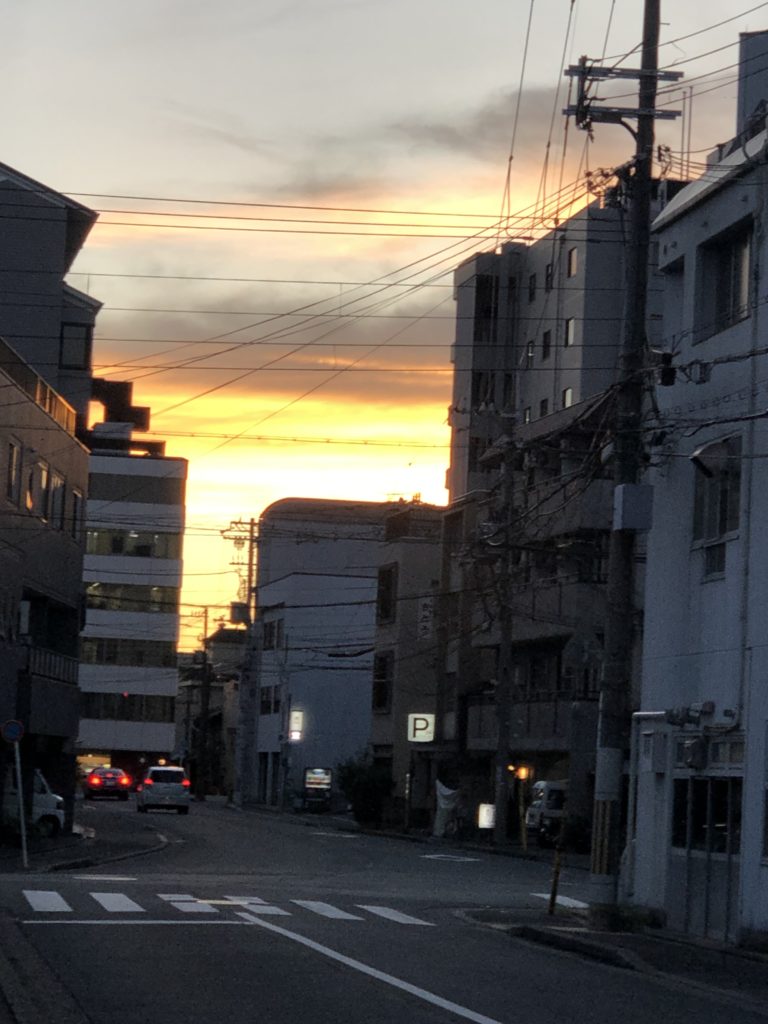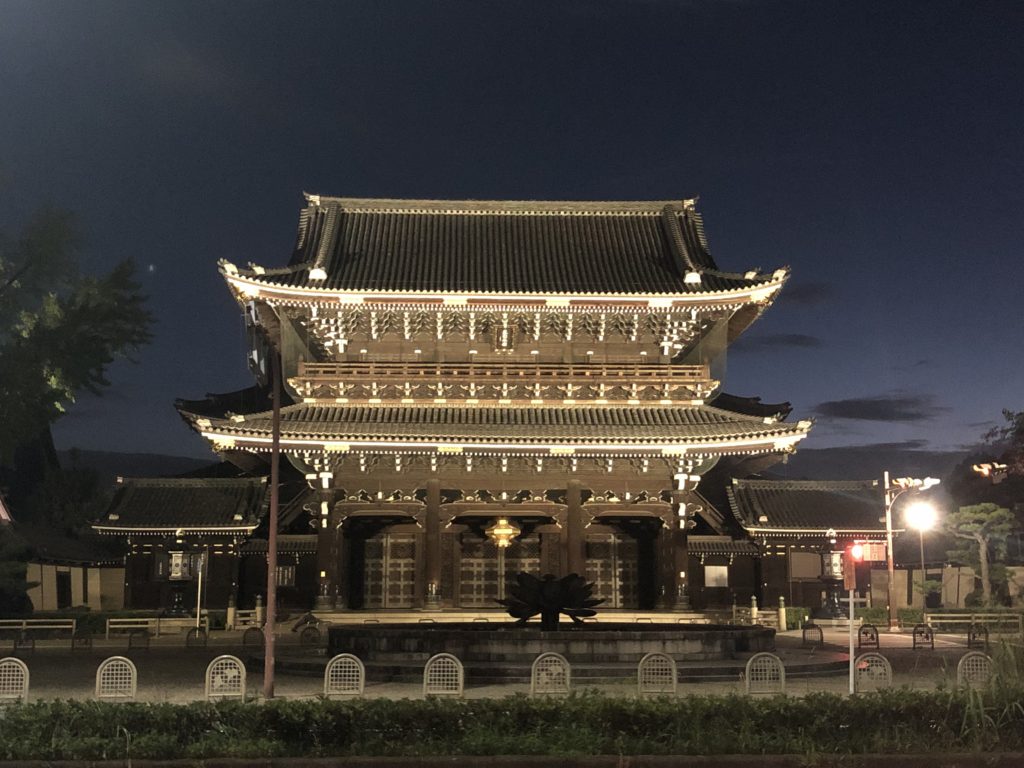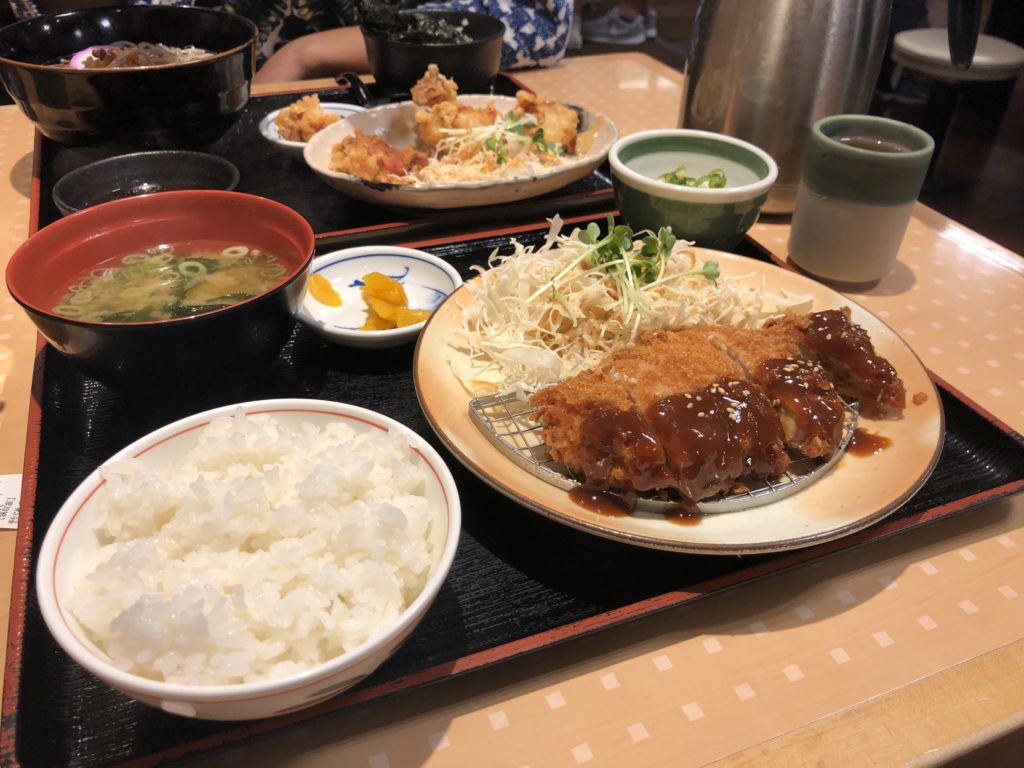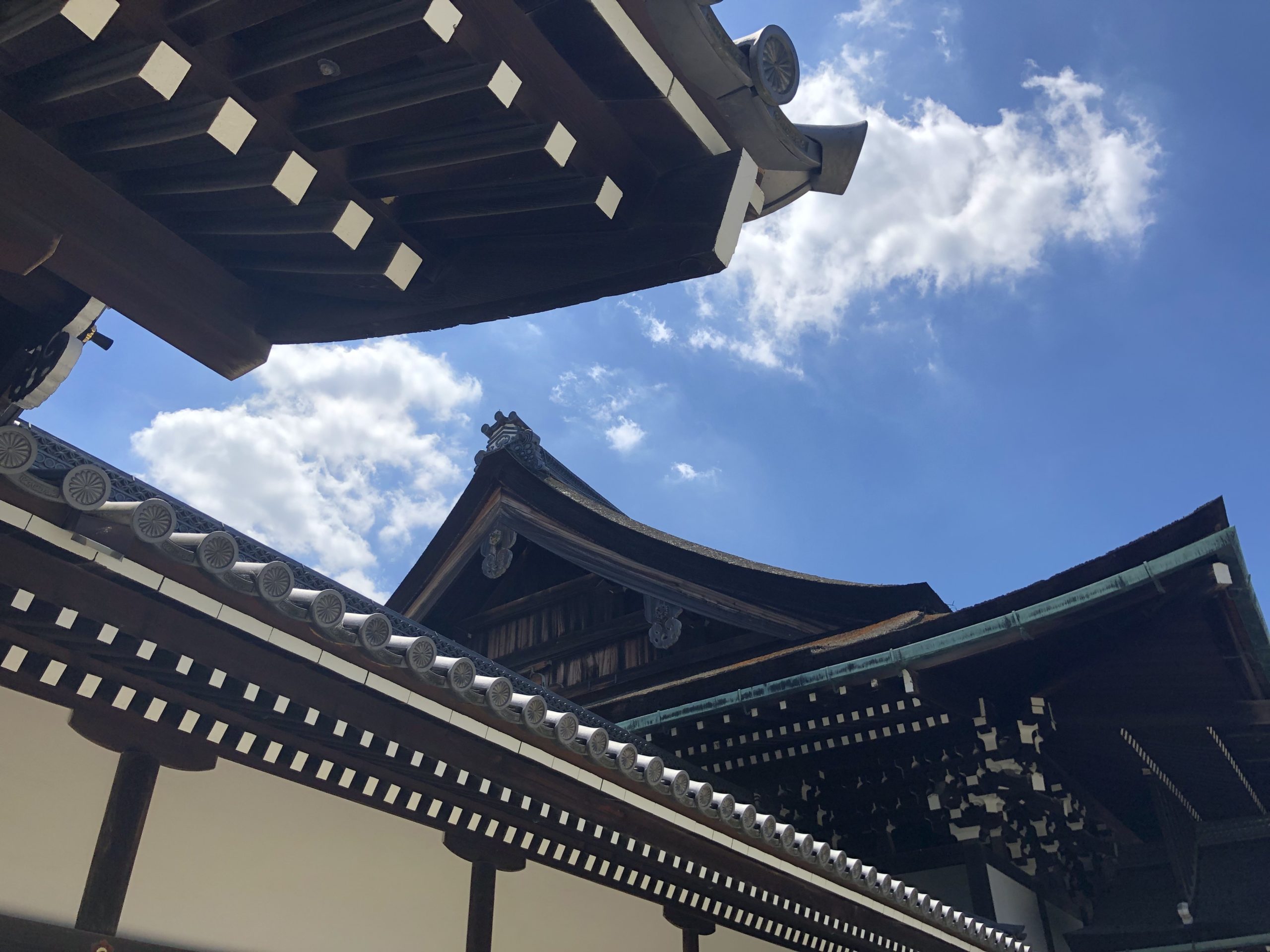The history of Japan’s emperors goes back a long way. According to legend, the very first emperor appeared around 660 BC. It was only in the 4th century AD that rule by Imperial Court was formalised, and at the end of the 7th century that the first permanent Imperial capital was established in the city of Nara (about 40km south of Kyoto). Then, in 1185, something curious happened. After a key military victory, a leader of the Minomoto clan seized power away from the ruling aristocracy and became the country’s Seii-Taishogun, or simply “shogun”, meaning “Commander-in-Chief”. While the emperor remained the head of state in title, the shogun came to hold all the real power in Japan. Sons of emperors were taught calligraphy & literature, while sons of shoguns were taught to rule. The country was structured as a feudal state with regional lords (daimyos) holding substantial power over their respective territories, but it seems that there was no doubt as to who was the big dog in the barn. This arrangement lasted for about 700 years.
This period is divided into three shogunates, the second of which ended in a lengthy civil war. In the early 1600’s, a man by the name of Tokugawa Ieyasu unified the country and emerged as the new Shogun of Japan, ushering in the third and final shogunate. While he made his primary base in Tokyo (called Edo at the time), in 1603, he had Nijo-jo Castle built as his official residence in the royal city of Kyoto (the Imperial Palace was down the road). And it was from this castle that he announced to the various feudal lords of Japan that he had been appointed as the country’s shogun. The Tokugawa shogunate lasted for 260 years and 15 generations.
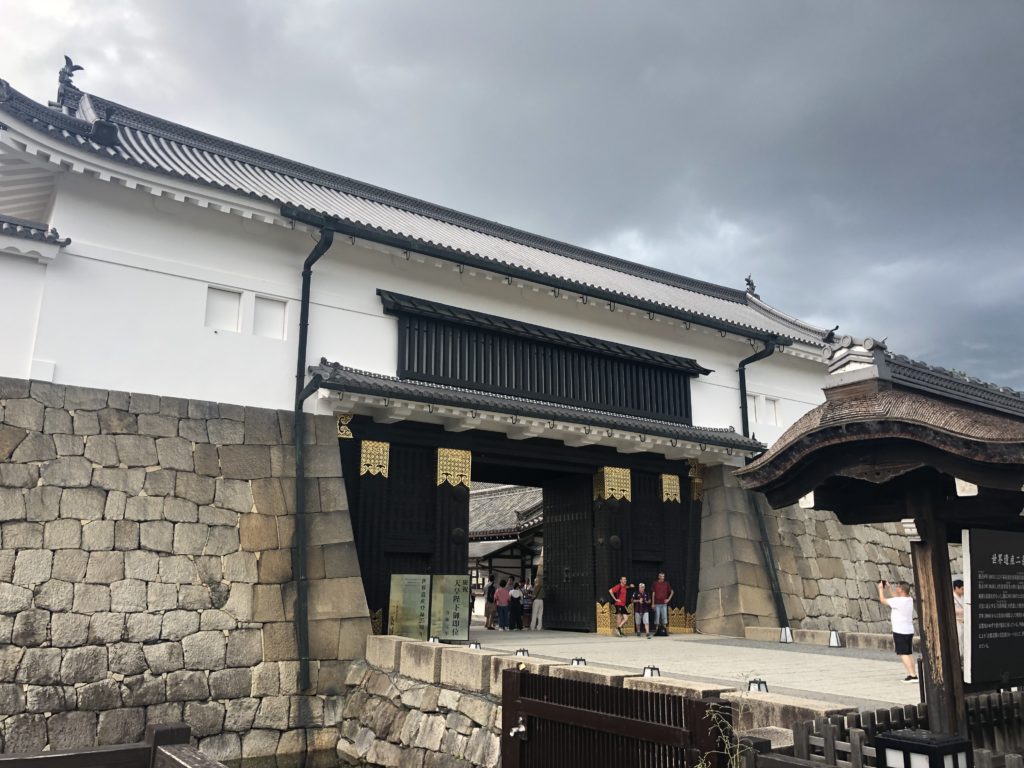
Visitors today enter the castle grounds through the East Gate. After entering, you can pick up an audio guide, which we give a solid thumbs up. Next, you come to Kara-mon Gate – an impressive structure worthy of its former role as the gateway to the highest office in the power hierarchy.
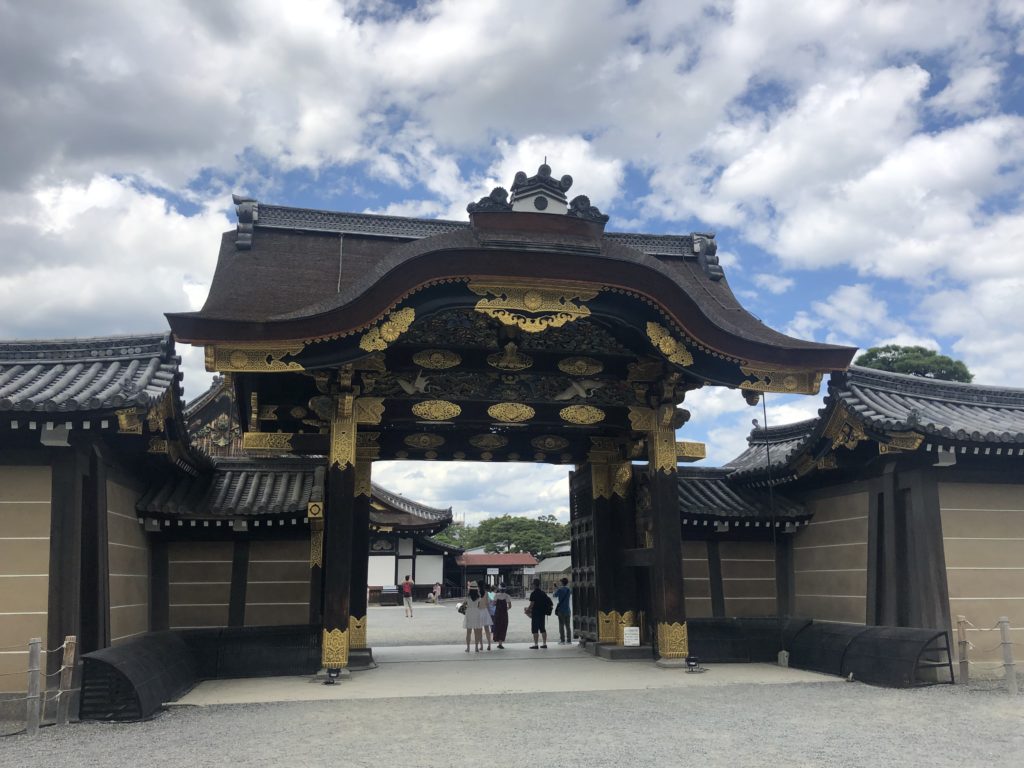
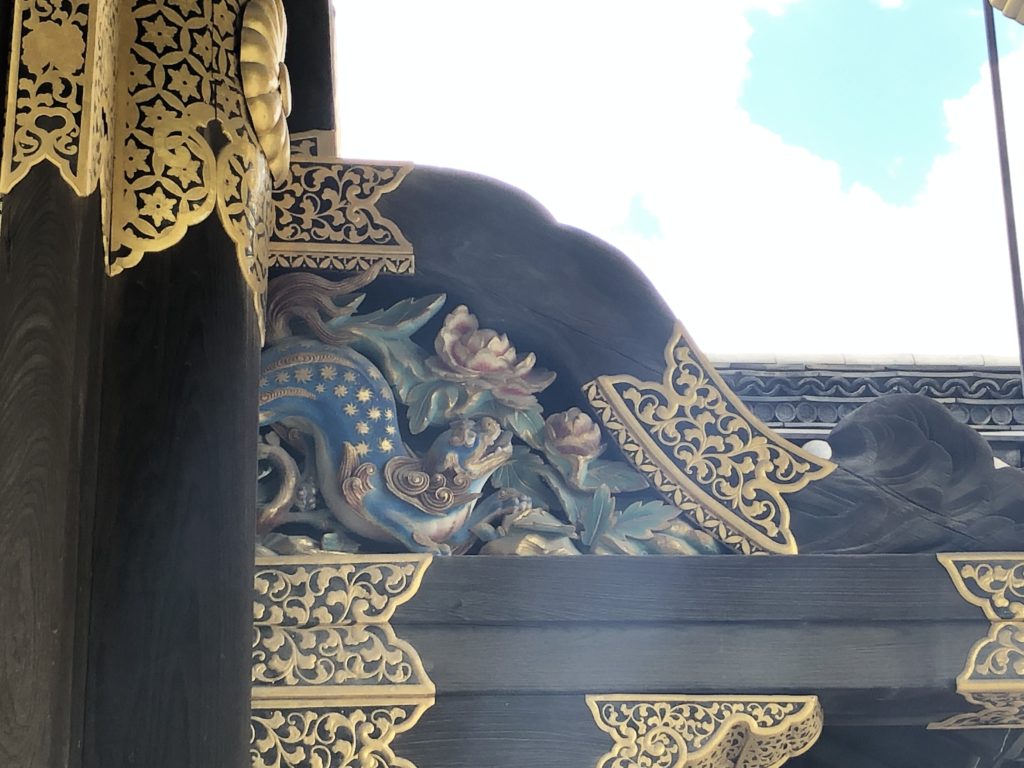
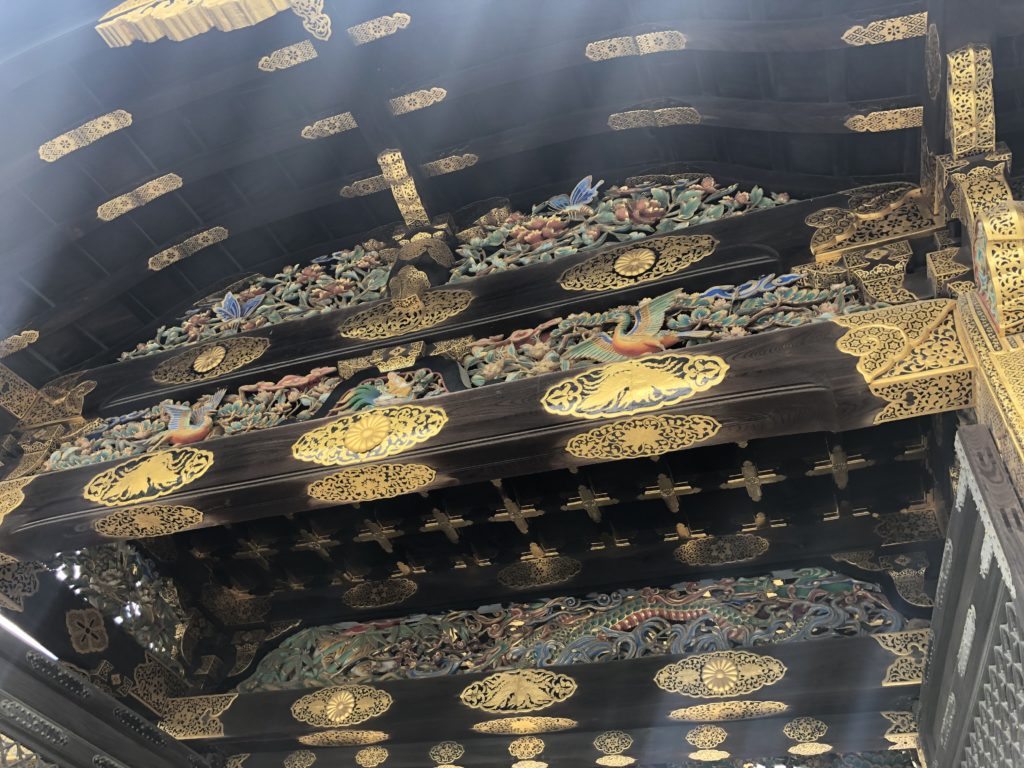
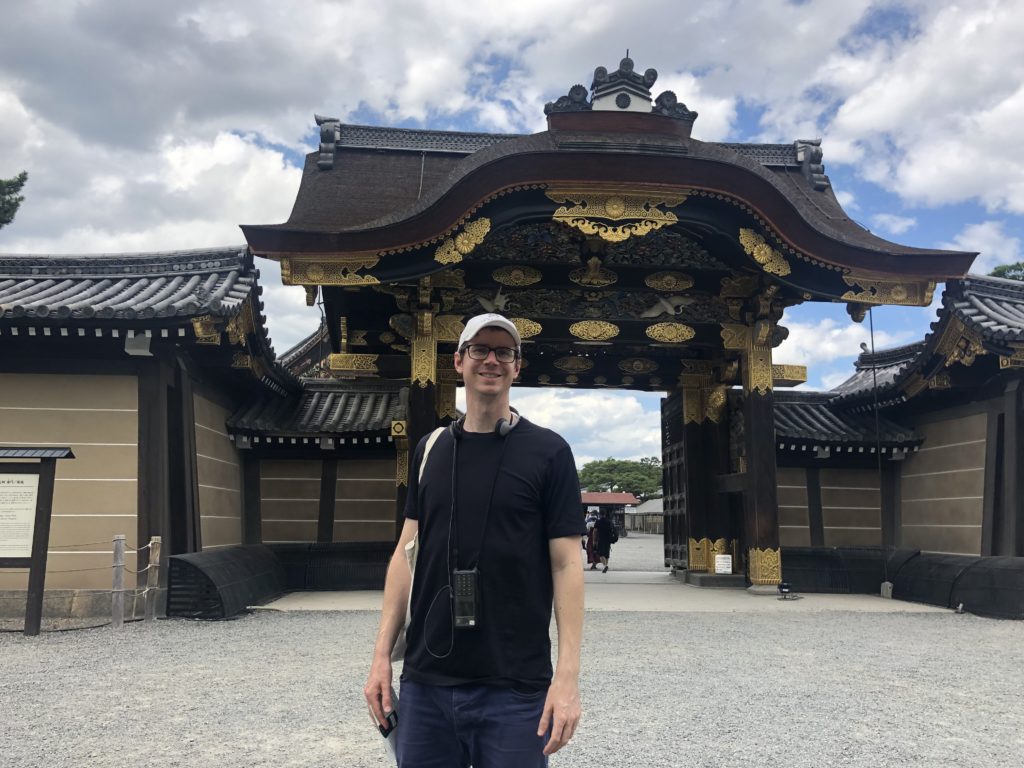
From here you can enter the Ninomaru-goten Palace, undoubtedly the main event of a visit to Nijo-jo. The palace consists of six connected buildings, each with about five rooms brilliantly decorated in an very unique minimalist style. The palace is home to about 3,600 wall paintings, many that help bring nature right inside the rooms of the palace. Unfortunately, taking photos in the palace is not allowed.
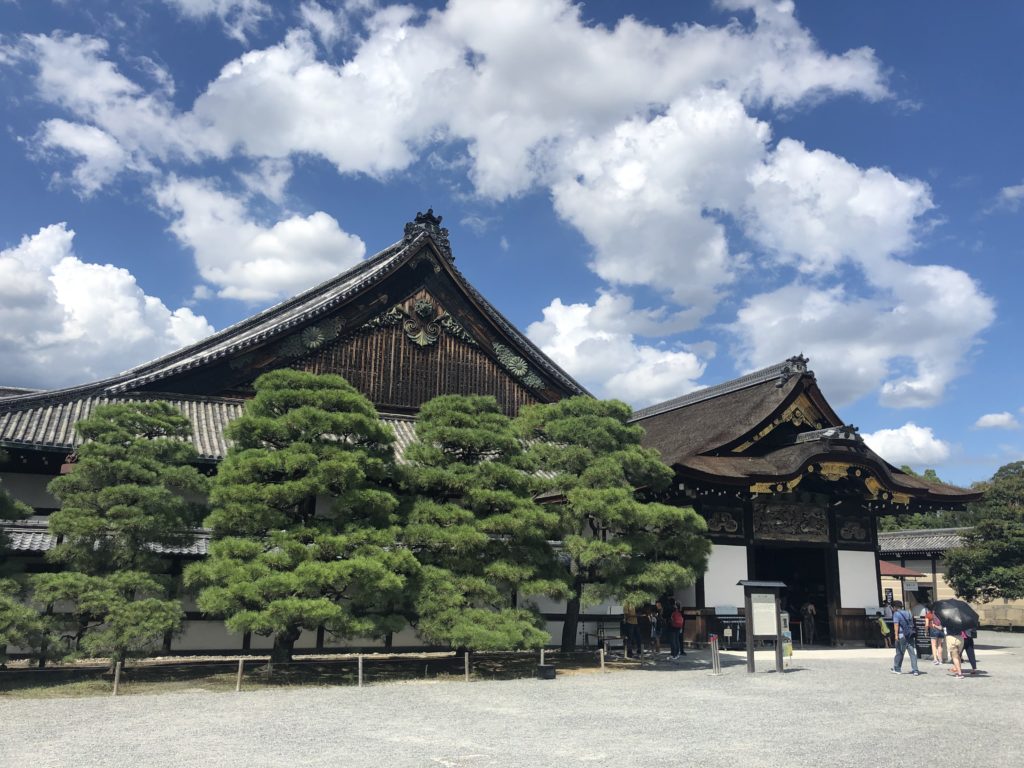
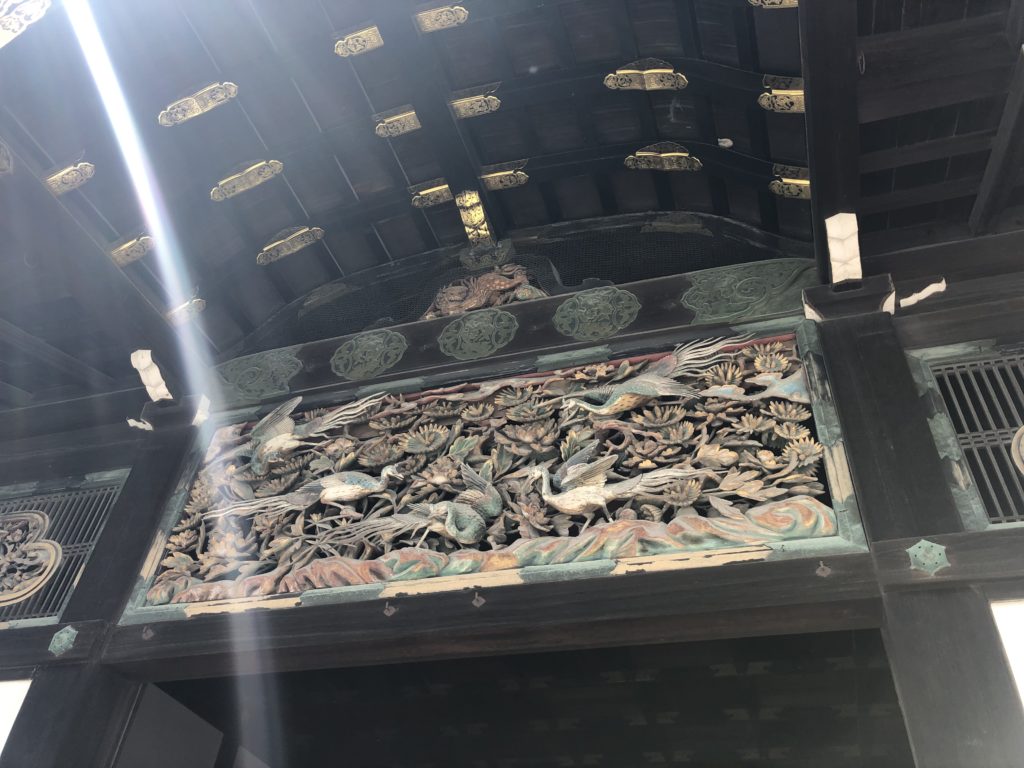
Again, the audio guide was excellent. One of the first rooms you pass was where feudal lords would have to wait before seeing the emperor. Here, paintings of ferocious tigers on a golden background informed those waiting who’s in charge. The Grand Hall of the palace is divided into two rooms, one slightly raised above the other – one guess as to where the Shogun would sit. More intimate meetings were held in rooms with beautiful cherry blossom wall paintings, or with depictions of the four seasons. It all seems very much tied to nature – in the Shogun’s resting area, the walls display calm landscape scenes; while hawks adorn the walls in a weapons room.
One really interesting aspect of the palace was the soft squeaking sound produced as you walk along the corridors. Downward pressure on the floorboards pushes little embedded clamps (that secure those boards to structural beams) to make a soft squeak. There was some speculation that this was installed to announce the presence of intruders, although apparently this is a myth.
In 1867, inside the palace’s Grand Hall, the 15th Tokugawa shogun announced to the feudal lords that he was returning political control back to the emperor, bringing the age of shoguns to an end. The emperor at the time went by the title Meiji, and this historic act became known as the “Meiji Restoration”. The 260-year Tokugawa Shogunate was known as a relatively stable and peaceful period for the country. But it was also extremely isolationist. Little interaction with the outside world meant that Japan had stood still while other nations had dramatically advanced. This situation could only last for so long (a good lesson from history), and more than anything, this seems to have forced the shogun’s hand. Restoration of the emperor’s power led the country down an incredible, rapid and full-scale modernisation.
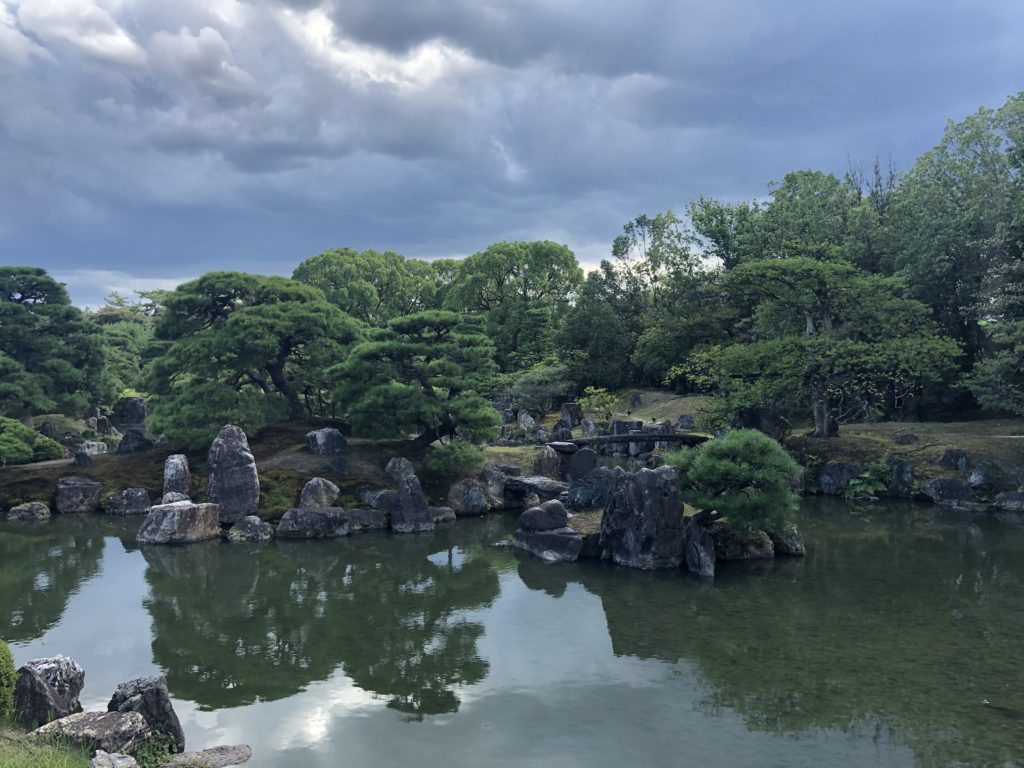
The Ninomaru Garden is situated behind the palace, and contains a central island (symbolising paradise), and two flanking islands (longevity). The Nijo-jo castle complex also houses a second palace that was under heavy renovation when we visited. It too has a beautiful adjacent garden, as well as a five-storey keep tower that you can climb.
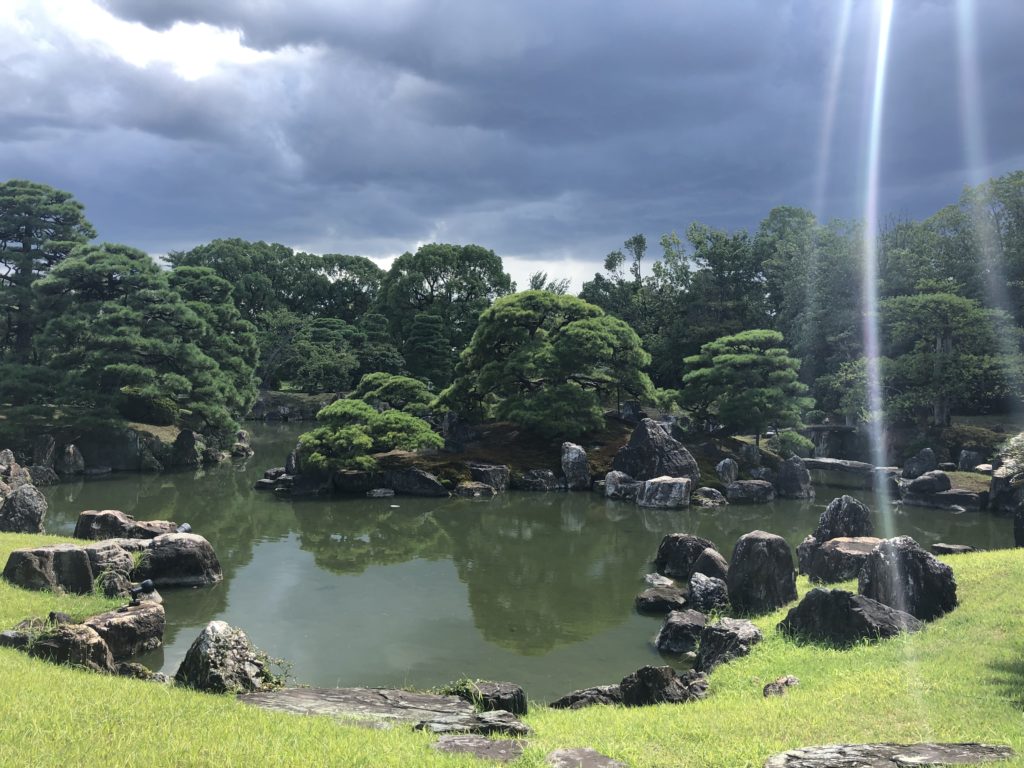
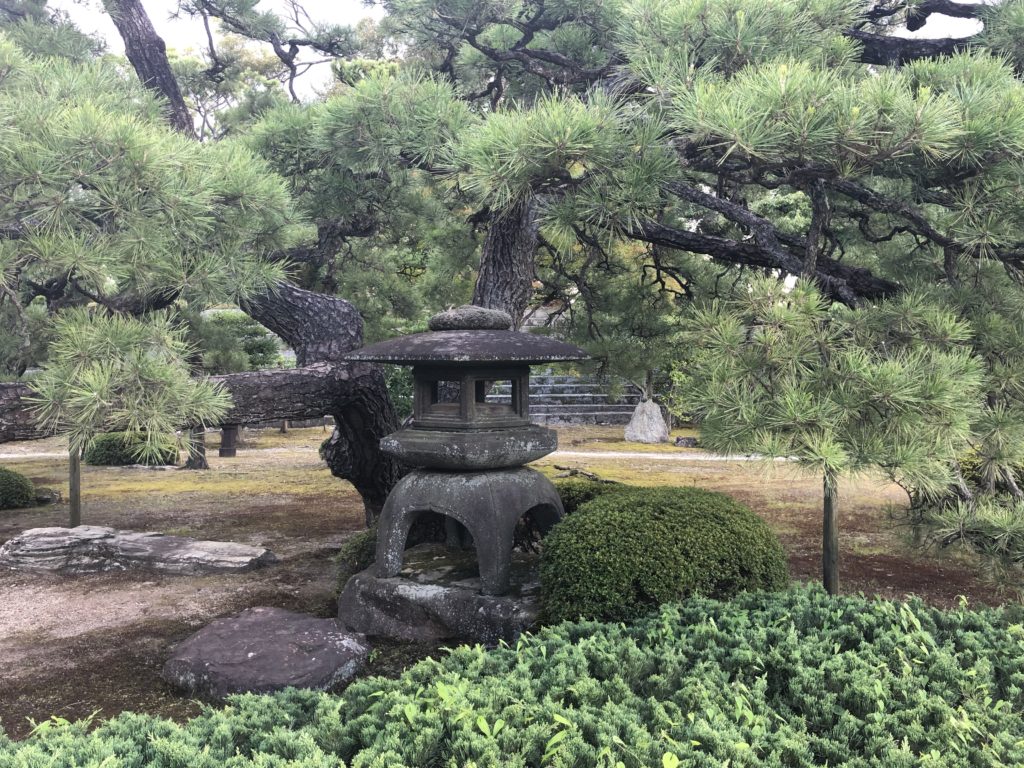

The rest of the Nijo-jo Castle complex was home to nice gardens, parks, and other structures.
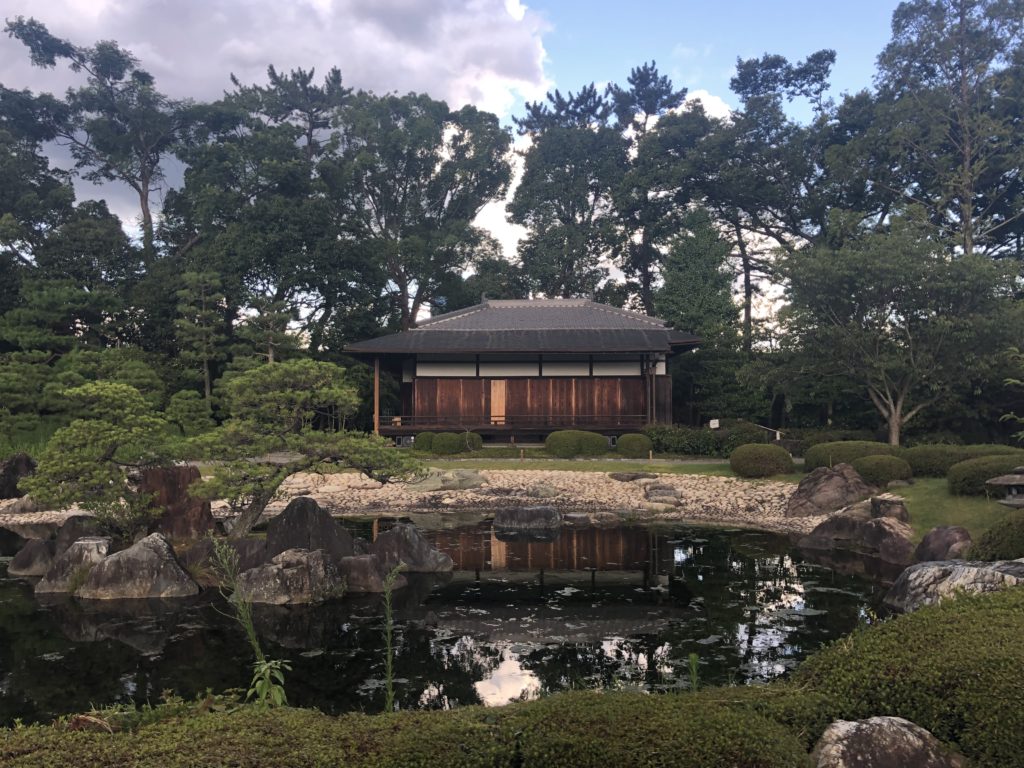
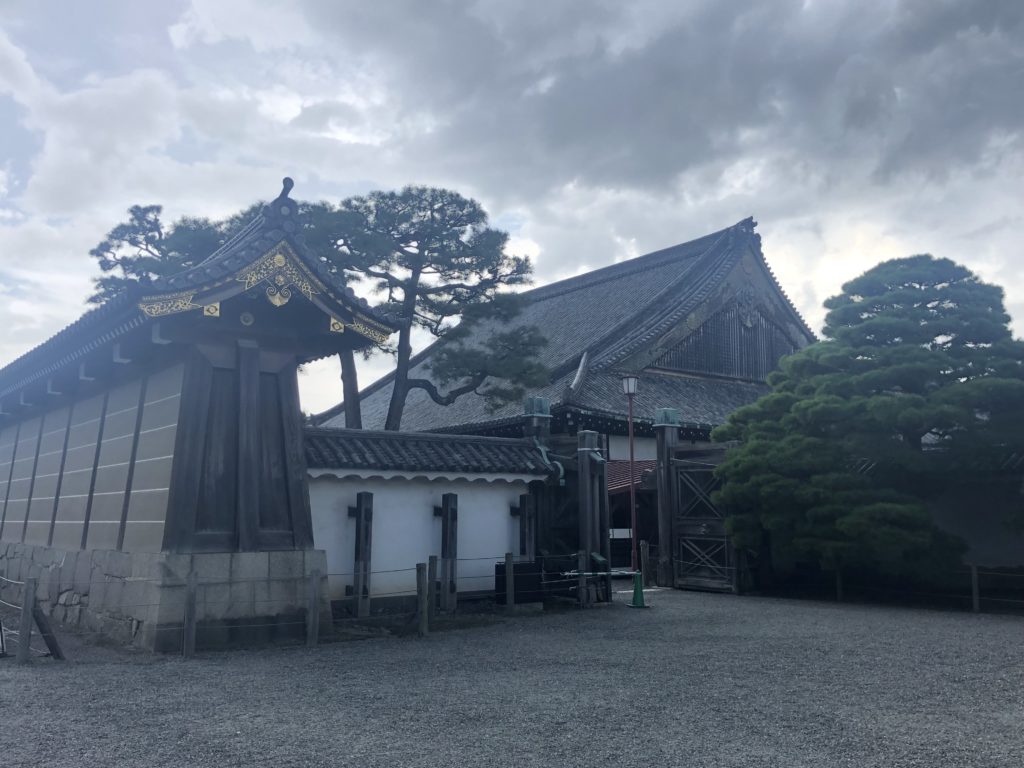
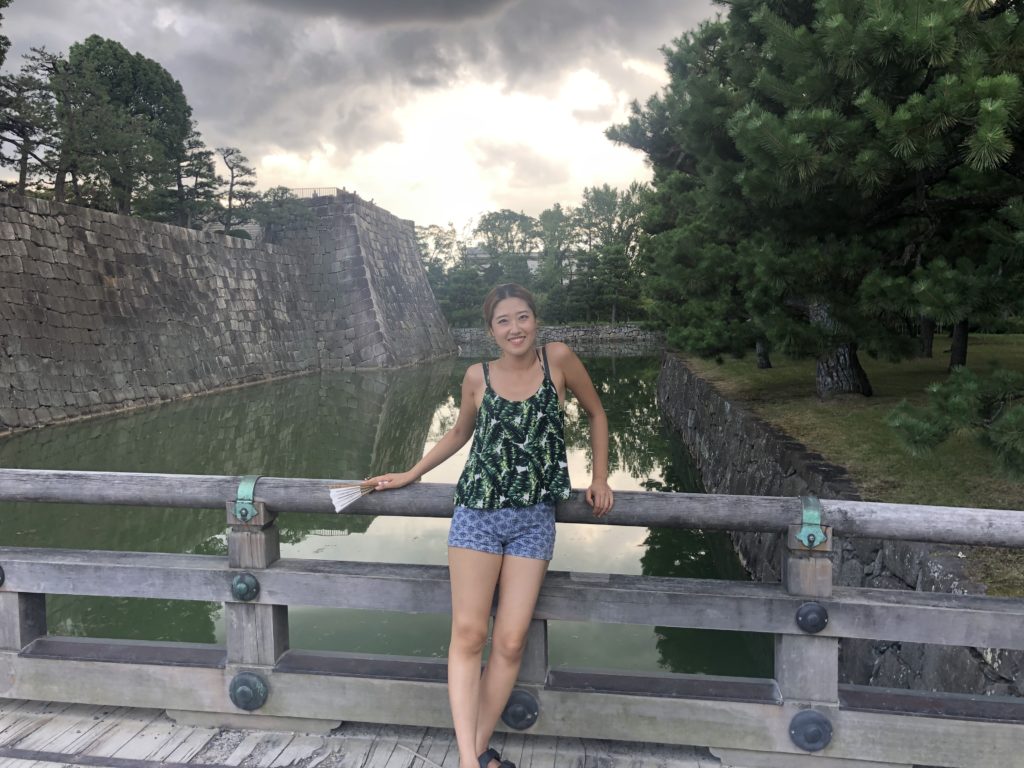
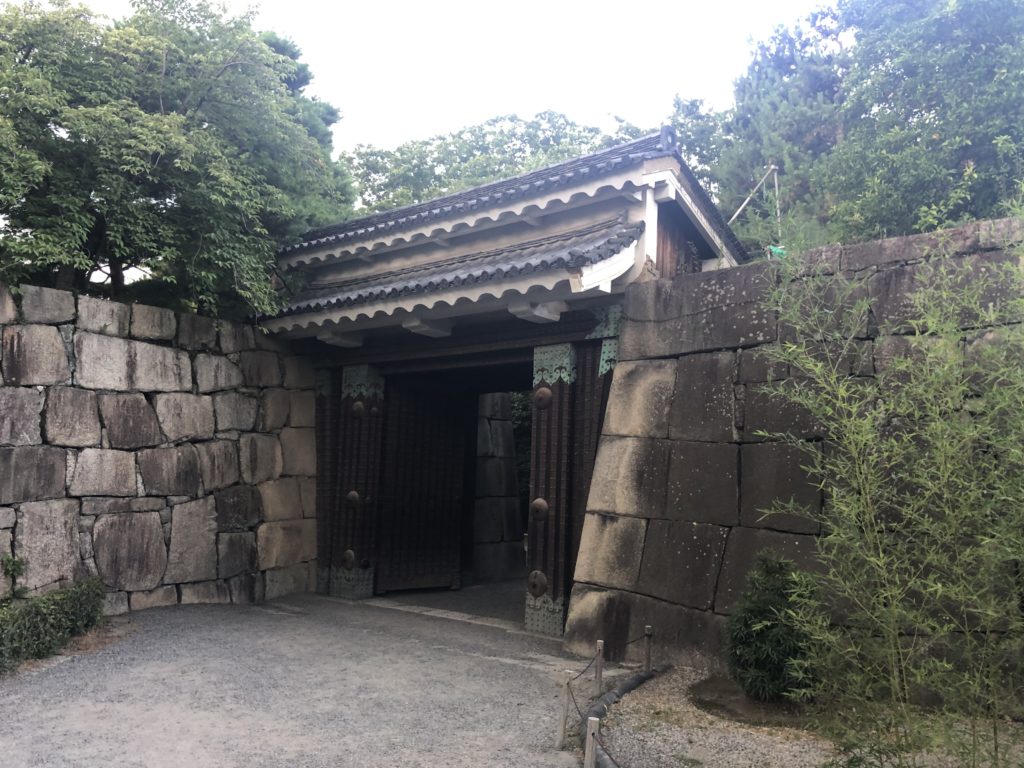
Our lunch that day was a quick bowl of gyudon – a “beef bowl” with a mildly sweet sauce – along with a pork dish, soup, and salad.
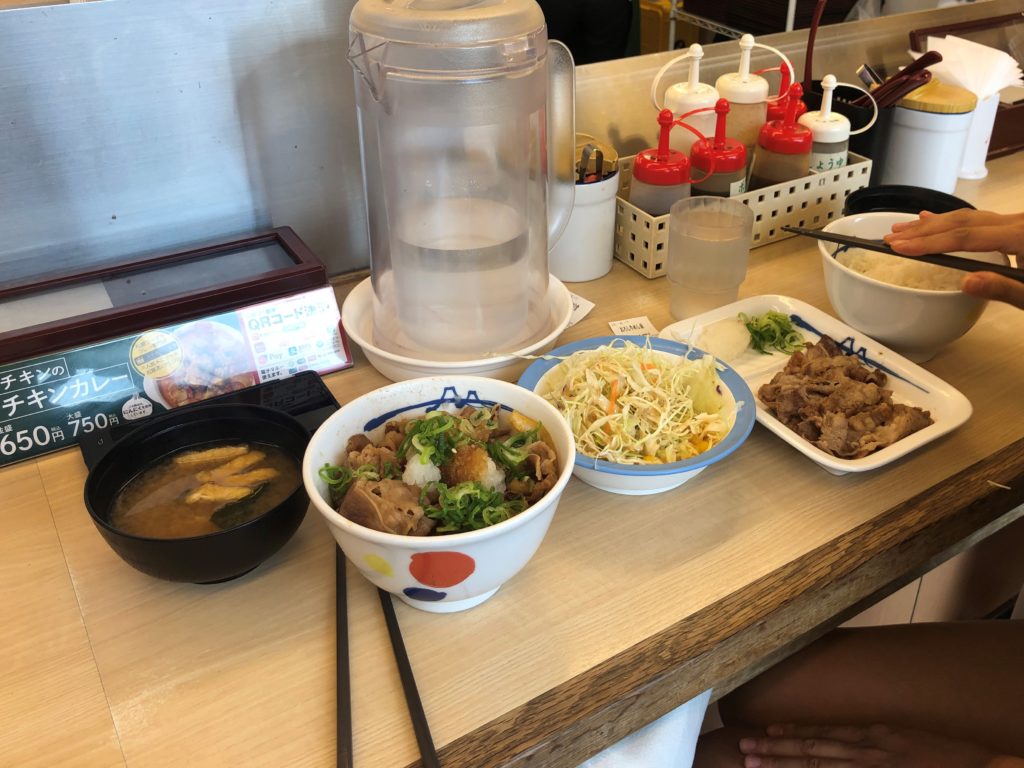
Having walked the halls of the shoguns, it was now time to see those of the emperors. Our afternoon stop was the Kyoto Imperial Palace, which is set inside the huge Kyoto Gyoen National Garden (near both Imadegawa and Marutamachi subway stations on the Karasuma line).
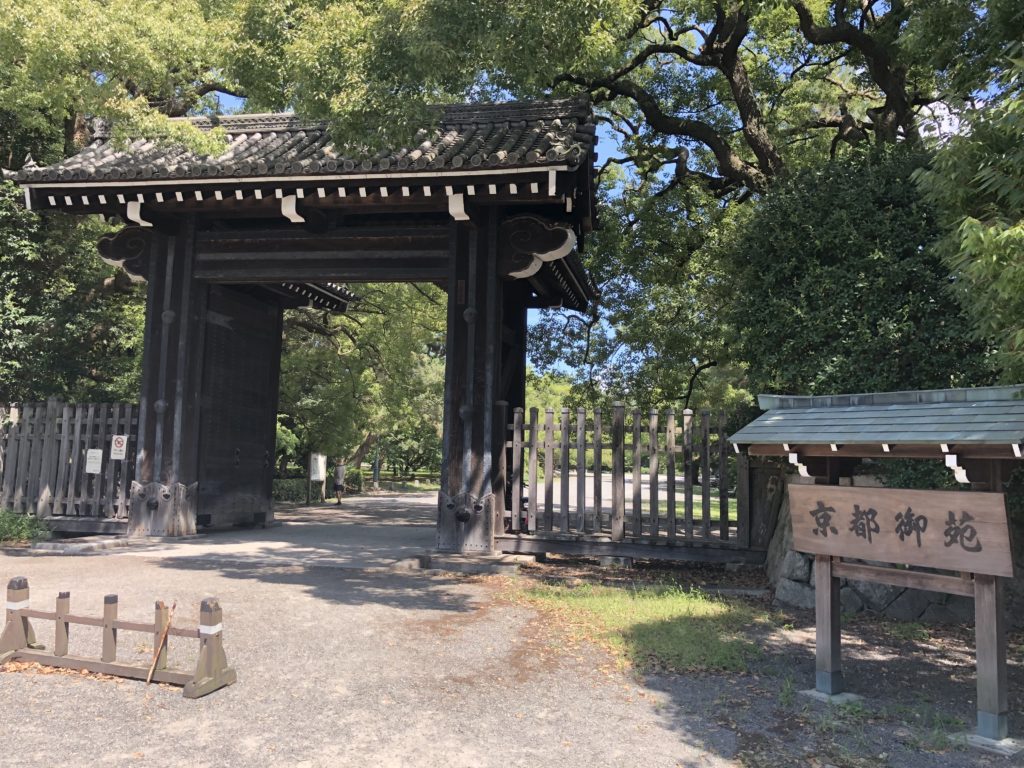
The Imperial Court moved to Kyoto in 794, and remained there until the Meiji Restoration in the late 1860’s (after which the emperor moved to Tokyo). Thus, Kyoto was the royal city of Japan for over a thousand years. There were a handful of different palaces during this time. The primary one that remains today was originally a temporary palace, and dates back to around 1330. It went on to serve as the permanent Imperial Palace for about 500 years until the Meiji Restoration. It’s a decent-sized complex (450 metres x 250 metres) with some very photogenic buildings and spaces.
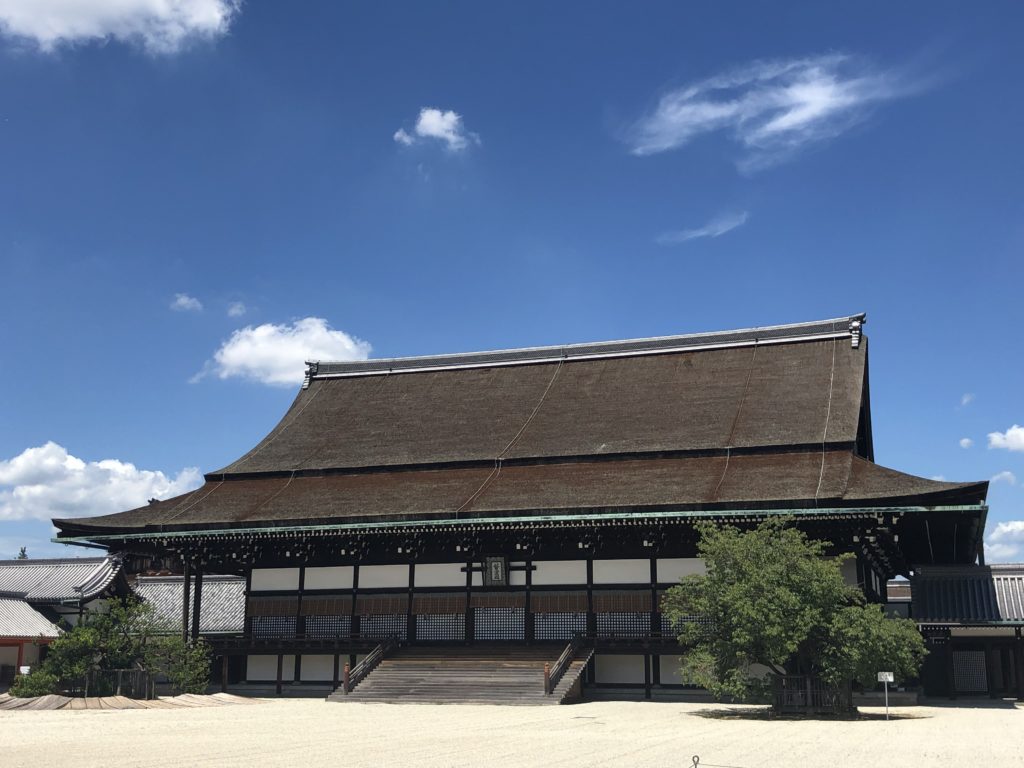
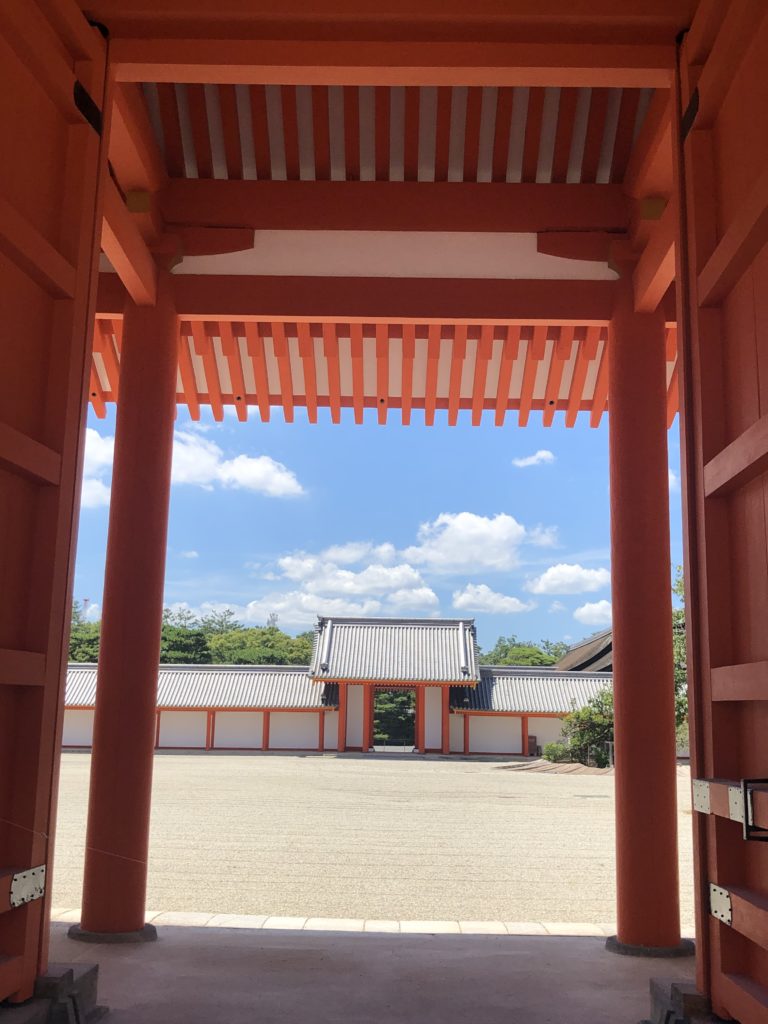
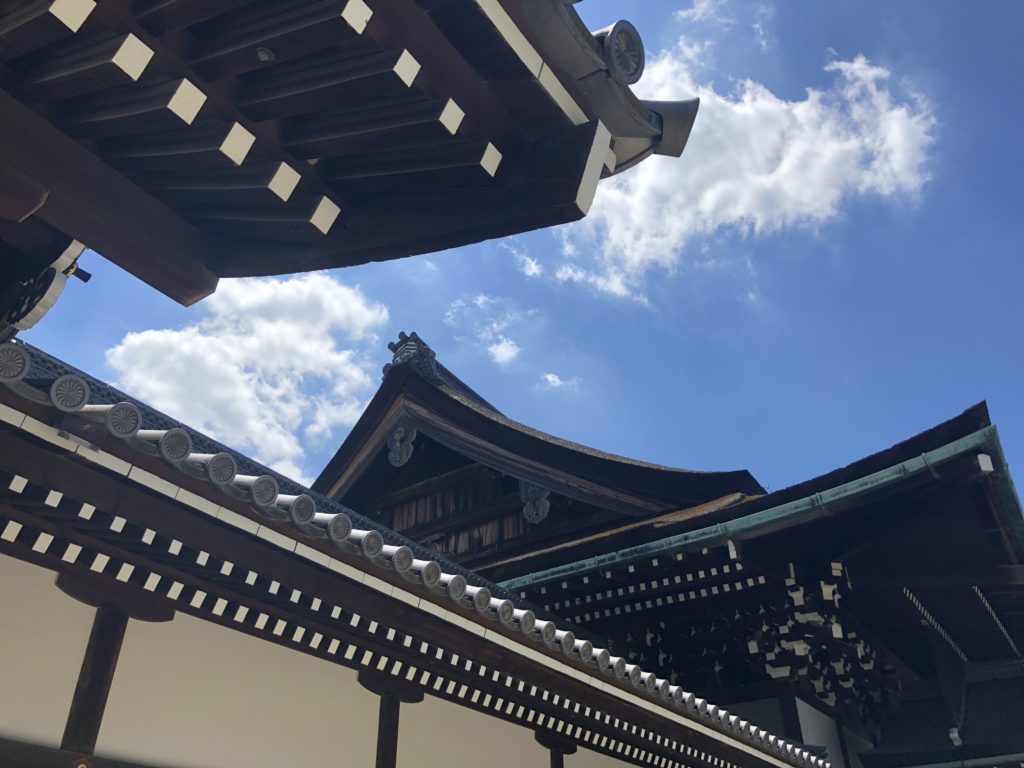
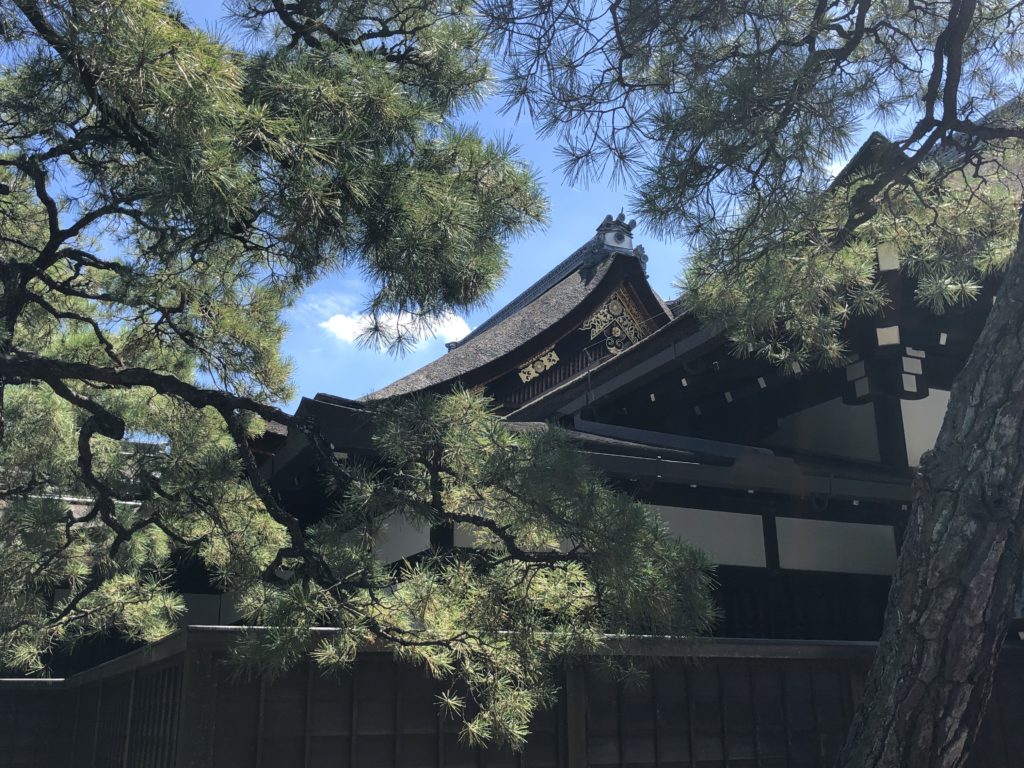
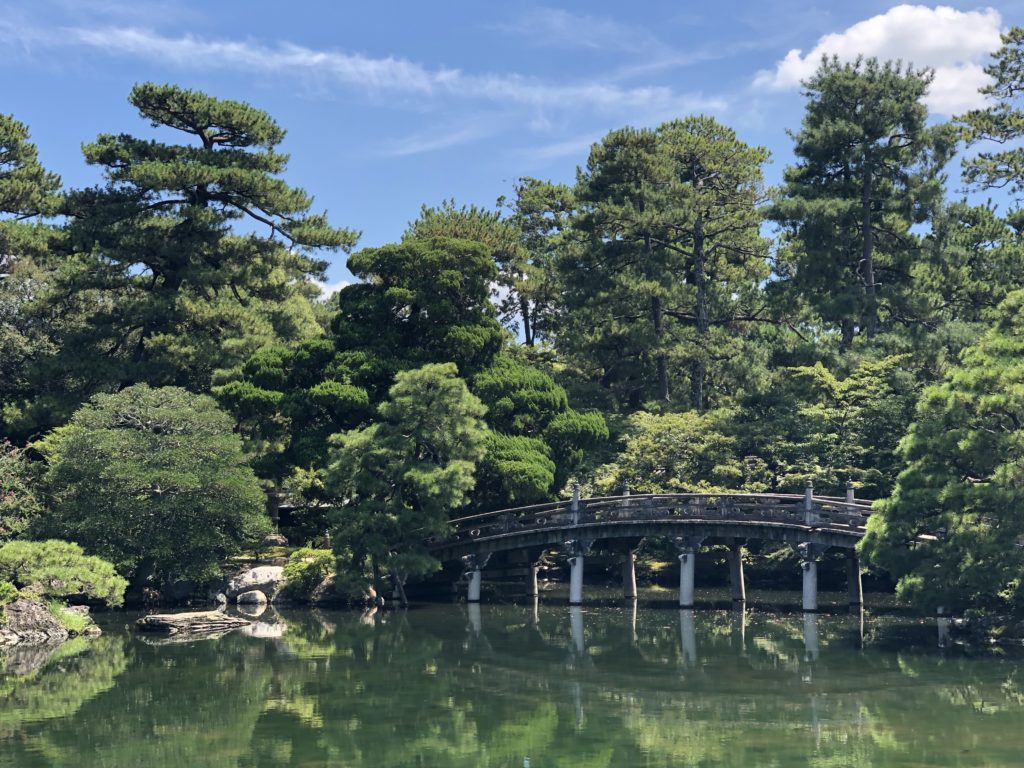
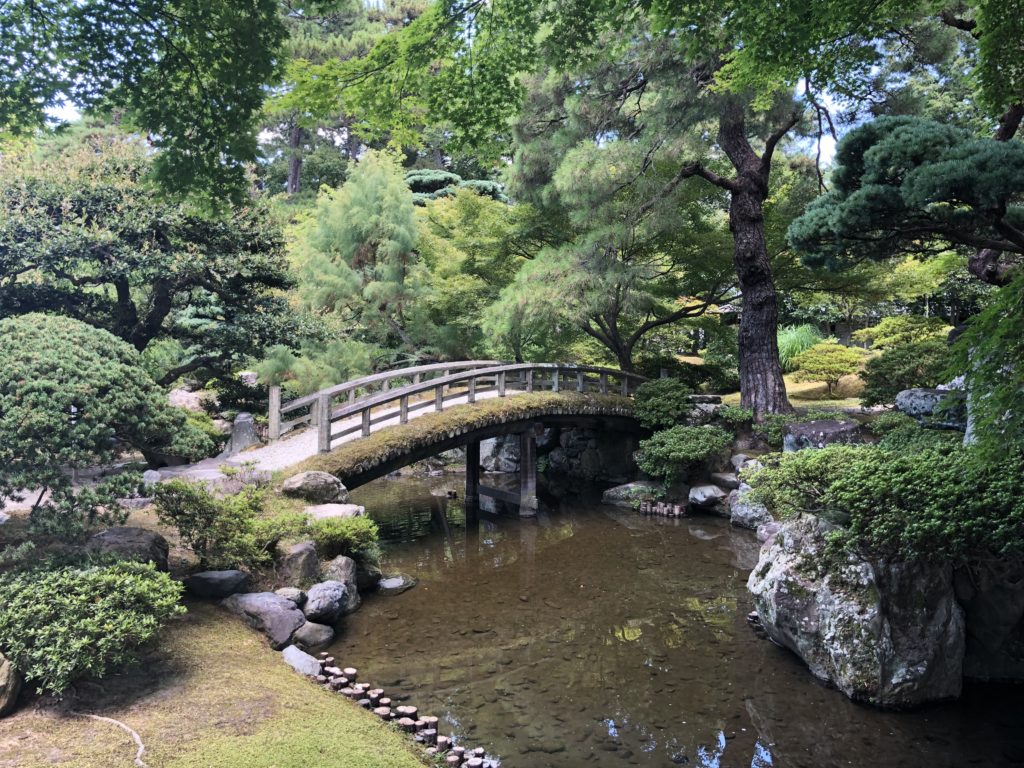
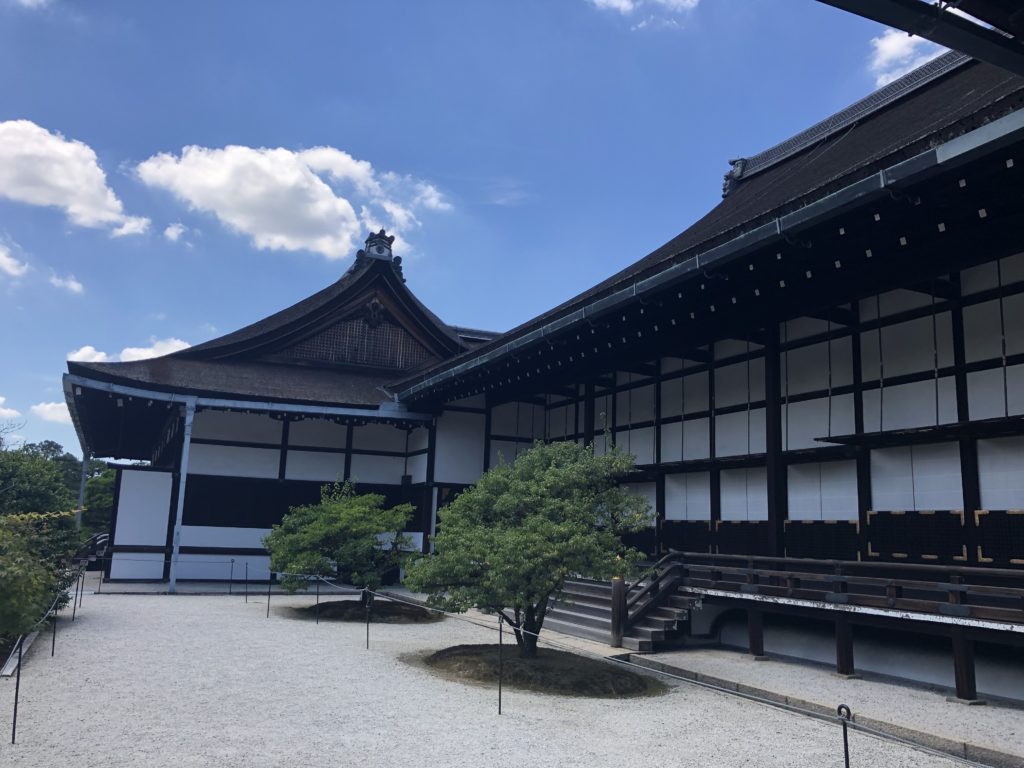
As with most historic wooden buildings, the actual structures burned down numerous times in the past. But some of the older buildings here go back to 1855.
Our overall impression was the Nijo-jo Castle is an absolute must-see, while Kyoto’s Imperial Palace is a nice extra if you have the time. The architecture, beautiful spaces, and the deep history embedded in both places were highly memorable.
After a comprehensive dive into Japan’s history on what was a very hot and humid day, we wandered the streets near our hotel and stumbled upon some really fantastic food & lots to see and do.
